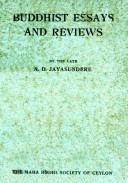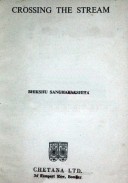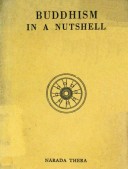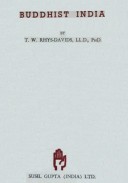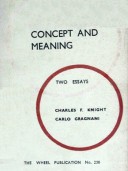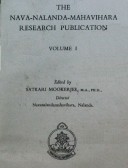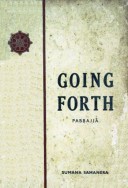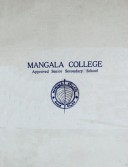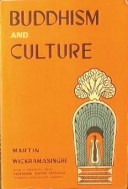Tìm Sách
Sách tiếng Anh-English >> Buddhist Essays & Reviews
Thông tin tra cứu
- Tên sách : Buddhist Essays & Reviews
- Tác giả : A. D. Jayasundere
- Dịch giả :
- Ngôn ngữ : Anh
- Số trang : 203
- Nhà xuất bản : The Maha Bodhi Society of Ceylon
- Năm xuất bản : 1949
- Phân loại : Sách tiếng Anh-English
- MCB : 1210000003423
- OPAC :
- Tóm tắt :
LIST OF CONTENTS
In this list the articles have been arranged in chronological order.
Preface
Some Corrigenda
- Bishop Copleston on “Buddhism ”—The Theosophisl of probably January, 1893
- L. Woodward and Mahinda College—Mahinda College Magazine, December, 1919
- Ahimsã: Non-hurting—The Buddhist Annual of Ceylon, 1920
- Frank Lee Woodward: A Buddhist Idealist—The Buddhist Annual of Ceylon, 1920
- The Patthãna Pakarana and Immanuel Kant—Supplement to Some Points in Buddhism by the Ven’ble Thero Sĩlãcãra, 1921
- A Modem Critic of the Dhamma—The Buddhist Annual of Ceylon, 1921
- Anattã : The Crux of Buddhism—The Buddhist Annual of Ceylon, 1922
- The Causal Formula in terms of Happiness—The Buddhist Annual of Ceylon, 1924
- Kesi, the Horse Trainer—The Maha Bodhi, February, 1925
- Got am a the Magician and His Spell—The Buddhist Annual of Ceylon, 1925
- Buddhism and the World Problem—The Buddhist Annual of Ceylon, 1926
- The Buddhist Idea of Giving (Dana)—The Buddhist Annual of Ceylon, 1928
- Liver According to Norm—The Buddhist Annual of Ceylon, 1928
- Why Buddhism? A Dialogue—The Mahã Bodhi, June, 1929
- A Review of Bhikkhu Silacara’s Addresses and Papers on Buddhism—The British Buddhist, September, 1929
- Rhys Davids and “The Higher Criticism”—The British Buddhist, June, 1932. (Reproduced from The Mahã Bodhi, April-May, 1932)
- Ahatta and Moral Responsibility—The Mahã Bodhi, November, 1932 and March-April, 1933
- “Thoushalt not Kill”—The Buddhist, July, 1933
- Buddhism and Warfare— ?
- Killing justified under any Circumstances ?—The Buddhist, August, 1933
- Kãli Devi, the First Female Saint—The British Buddhist, January-March, 1934
- “Justifiable” Killing—The Buddhist, August, 1934
- “Buddhist Conception of Dharma” and “WAspects of Nirvana” by Dr. B. C. Law, Ph.D.—The Mahã Bodhi, November, 1935
- Problem of Anattã—The Mahã Bodhi, April, 1936
- Jainism and Buddhism—The Mahã Bodhi, May, 1936
- The Uniqueness of a Religion—The Ceylon Daily News Vesak Number, May, 1936
- Buddha-Dhamma and the Sinhalese—The Buddhist, April-May, 1936
- “Concentration and Meditation” published by the Buddhist Lodge, London—The Mahã Bodhi, July, 1936
- The Gods and Their Place in Buddhism—The Mahã Bodhi, May-June, 1939
- Paul Carus’s “TheGospel of Buddha“—The Mahã Bodhi, September, 1939
- Buddhism and Defence—The Mahã Bodhi, November-December, 1942
- Is Buddhism a Religion ?—The Mahã Bodhi, May-June, 1946
- The Buddhist Doctrine of Anattã—The Buddhist, October, 1946
- We Must Walk the Path; Buddhas only show the Way—The Buddhist, January, 1947
- Why is Dana not included in the Noble Eight fold Path?—The Ceylon Daily News Vesak Number, 1947
Appendix.
Editorial Comments, etc.
- Rhys Davids and “The Higher Criticism”
- The Mahã Bodhi, April-May, 1932
- The British Buddhist, June, 1932
- The Buddhist, August, 1932
- Gods and Their Place in Buddhism (p. 158):
- Comment by an European Bhikkhu
- A Magnificent Gift:
- The Buddhist, December, 1946
- Reception Address at the All-Ceylon Congress of Buddhist Associations, 1920:
- The Buddhist, January, 15 1921
Index
PREFACE
The author of these Buddhist Essays and Reviews, Mr. Abraham Dias Jayasundere, was bom on the 1st February 1869 at Meepe, a village in the Talpe Pattu of the Galle District. He received his education first at the Central School, Galle, which was a Government institution in the charge of Mr. J. E. Anthonisz, a noted educationist of the time, and which subsequently became the All Saints’ School, and later at St. Thomas’ College, Colombo, then administered by the famous Warden Miller. His leaning was towards the Classics and he was particularly proficient in English and Latin which was eventually shown in the facility with which he explained the most abstruse points of the Dhamma to many a learned audience.
In accordance with the wishes of his father, who was himself learned in Sinhalese and had a fair knowledge of Pali and Sanskrit, he decided to enter the legal profession and apprenticed himself to the late Mr. Nicholas Dias Abeyesinghe of Galle, a famous Proctor of the time, who commanded a lucrative practice on the criminal as well as on the civil side.
It was during the period of his studentship that Colonel Olcott first visited Ceylon and inaugurated the revival of Buddhist education. The task of infusing the Buddhist public with enthusiasm as to the necessity of establishing Buddhist schools for the education of their children was tiring and laborious but Mr. Jayasundere flung himself with all his energy into the work and spent several years in such service and thereby delayed to some extent, to the evident displeasure of his father, his entry into the profession of his choice. The outcome of his efforts was the inauguration of the Gaffe Buddhist Theosophical Society and the establishment of Mahinda College. He was Secretary of the Society and later its President and he took the keenest interest in its work till his retirement from active practice at the bar.
In the year 1894 he qualified for admission to the profession and was enrolled a proctor of the District Court of Galle. While being a keen student of the law he devoted much time during this period to the study of literature and philosophic subjects. He was a keen supporter of the Rationalist Press and read every book turned out by that Association at the time. He was also for many years a regular reader of the “open Court” of Chicago, and ail theosophical and many philosophical publications. He inaugurated the Galle Debating Society by inducing many lawyers and public officers to join it and was for many years its Secretary and guiding spirit. He not only contributed his share to practically every debate but also read many a paper before it and worked so hard for its improvement that before long it acquired a reputation equal to that of the well-known and contemporary Smallpass Literary Association of Colombo.
He carried his energy and thoroughness in due course to his professional work and soon established for himself a large civil and criminal practice which left him little time for his previous avocations. He then purchased, and went into residence at, the bungalow called “Nalanda”, about a mile from the Fort of Galle, where he came into close contact with several noble men who influenced his life to a great degree and gave a fillip to his study of the Buddha Dhamma. They were the Venerable Yatamalagala Somãnanda Thera, Incumbent of the Gunaratana Ãvasa in Dickson Road, E. R. Gooneratne, Wasala Mudaliyar and Acting Maha Mudaliyar of Atapattu Walauwa, Dickson Road, Godage Sagãris de Silva, Sinhalese Pandit of Mahinda College, and Frank Lee Woodward, Principal of the same College, of whom only the last named survives today.
Mr. Jayasundere first read every available publication on Buddhism in the English language and later decided to study the Dhamma in the original text and for that purpose started a Pali study class under the said Venerable Thera to which he induced several of his friends at the bar to join. These classes were at the beginning regularly held two days in the week but later declined to one a week and eventually lapsed altogether. Nevertheless Mr. Jayasundere continued his studies and remained a pupil of the Venerable Thera till the latter’s death in 1936.
As a result of this study he decided to translate the Catukka Nipãta of the Aộguttara Nikãya in continuation of the work of his esteemed friend the late E. R. Gooneratne Wasala Mudaliyar, the well-known scholar and first local representative of the Pali Text Society of England, who had some years previously, in 1913, published a translation of the Ekaka, Duka and Tika Nipãtas. In the foreword to his book, Mr. Jayasundere refers to the Mudaliyar in the following affectionate terms: “His sweet memory it was that prompted me, about a year ago to take up, from where he stopped, his labour of love Mr. Jayasundere’s translation was edited by Mr. Woodward who also was responsible for the rendering of the gathãs into blank verse and was published in 1925.
These Essays and Reviews were contributions by Mr. Jayasundere to different Buddhist journals at various periods of his career, the first having been written at about the time of his entering the legal profession.
He did not confine himself to writing on Dhamma topics but made many an attempt to teach the Dhamma to those who were apathetic and for this purpose organised the Buddha Dhamma Sangama which was later merged in the Galle Young Men’s Buddhist Association. He used to be regularly elected President of these Associations in spite of his opposition and much pleading but he got the better of his admirers by himself introducing a motion that a president should not be re-elected the following year and having it carried.
He also induced many Buddhists both from among his friends at the bar as well as from outside it to join in the observance of the Eight Precepts on Vesak day. Started in 1909 this observance was repeated during a number of years and on every such occasion he fed the upãsak as on sumptuous repasts in the preparation and administration of which his wife, who was the elder daughter of the late Mr. George Amarasinghe of Unawatuna, took a keen and delighted interest. In the giving of alms and the feeding of their guests, Mr. and Mrs. Jayasundere found the relaxation which their simple, abstemious and unostentatious way of living would otherwise have denied them.
In 1920 Mr. Jayasundere had retired to the quiet of Unawatuna and taken up residence at the house built on the site of an old Dutch Governor’s residence called “Nooitge-dacht” by his father-in-law, to which he added a two-storey wing for his personal use, where it was his delight to entertain all students of the Dhamma; and it was seldom that any visitor interested in Buddhism and coming from foreign lands escaped his hospitality or the benefit of many discussions with him on the most abstruse points of the Doctrine.
The loss of his wife in the year 1937 was a great blow to his peace of mind but after some time he got back to his normal routine of devoting the major part of the day to reading and study. He had his wife’s ashes interred in an ornate tomb in his garden, within sight of his bed-room, and also had space reserved in the receptacle for the admission of his own ashes on a future date.
After his wife’s death the number and extent of his almsgivings became, as was to be expected, much reduced owing to his inability to supervise them but he made up for this short-coming by giving more lavishly to improvements to Buddhist Vỉhãras and other institutions and for the publication of books on the Dhamma.
He was a life member of the Colombo Young Men’s Buddhist Association and as such expressed his dissatisfaction that The Buddhist, the organ of the Association and the oldest Buddhist journal in the world, should appear without a cover and was not well supported by the members by contributing suitable articles for publication. He therefore donated to the Y.M.B.A. a sum of Rs. 10,000.00, invested by him, for the purpose of making improvements in The Buddhist with the income derived from the investment.
He was a Trustee of the Buddhist Congress Tri-pitaka Trust and undertook to defray the cost of publication of the Pali text and its Sinhala translation of the Dĩgha Nikãya of which Part I came out soon after his death.
Mr. Jayasundere was a firm believer that the Theravada school had handed down the Teachings of the Lord Buddha in their pristine purity and he had many a complaint to make against the conduct of the Editors of The Mahãbodhi of Calcutta for giving publication in that journal to the views of the Mahãyãnist school. He therefore had a great admiration for both Mr. H. D. Ratnatunga of Tangalla, who delivered the seventh lecture under the Dona Alphina Ratnayake Trust and for the columnist “Damsenevi” of The Sinhala Bauddhaya, as prominent living exponents of the Theravãda Doctrine. He rewarded the latter on one occasion with a personal gift of Rs. 500.00 for the excellence of the replies given by him to his many questioners. Ruhuna enjoys the unique distinction of having preserved the Sinhala literature during the past two or three centuries and among its literary giants and patrons of learning the name of A. D. Jayasundere will find a conspicuous place.
He died of heart disease on the 31st July 1947 at his residence surrounded by his relations. He had no children.
By his Last Will he has bequeathed a sum of Rs. 100,000.00 to his Trustees for the benefit of the Mahã Bodhi Society, the Vidyãdhãra Sabhã and the Colombo Y.M.B.A.
By his death the Buddhists have lost one of their learned scholars and the Mahã Bodhi Society its first life member and lay patron and one of its most ardent supporters. His scientific mind and the analytical method of his sifting of the Dhamma are well illustrated in the following articles and essays which the Mahã Bodhi Society have, as a token of gratitude to his memory, much pleasure in placing before the public.
The Society regrets the delay in bringing out this voulme. The work, originally undertaken to be done by Brahmacãri DevapriyaValisinha, fell, on his return to India on 7th January, 1948, on the shoulders of a very busy member of the Society, and at one stage a part of the typescript and valuable notes gathered for an Introduction were completely lost. The loss of the former had to be made good by again collecting the material from the different journals in which it had appeared and in so doing one article has, by an oversight, been repeated under two heads, namely, “Buddha-Dhamma and the Sihhalese” taken from The Buddhist for April-May, 1956 and “The Uniqueness of á Religion” from the Daily News Vesak Number of the same year.
The publishers wish to express their gratitude to Dr. G, P. Malalasekera for editing, in the midst of his multifarious activities, a large part of these Essays and Reviews for the present issue.
P. P. SIRIWARDANA,
Hony. Secretary of the
Mahã Bodhi Society of Ceylon.
Colombo, March 21, 1949
 Facebook
Facebook
 Google
Google
 Google+
Google+
